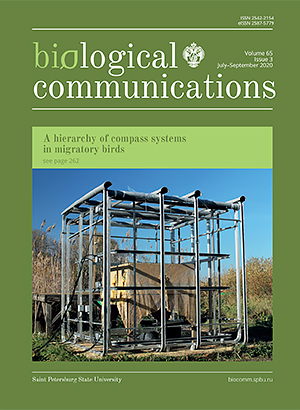A hierarchy of compass systems in migratory birds
DOI:
https://doi.org/10.21638/spbu03.2020.306Abstract
Migratory birds use several different sources of orientation information. They have at least three compass systems based on different cues: the sun and polarized light, the stars and their constellations, and the geomagnetic field. The concurrent information obtained from these three compasses is redundant, therefore the compasses need to have a hierarchy and must be calibrated relative to each other. One of the compasses should dominate the others, or some orientation cue should be used to calibrate the remaining compass systems. Results of experiments on a variety of songbird species demonstrate that while astronomical cues calibrate the magnetic compass during the pre-migratory period, strategies used during the migratory period are more diverse. In the present review, we analyze the results of all crucial cue-conflict studies, mostly performed in nocturnal songbird migrants; we also try to understand why some migratory species calibrate their magnetic compass on sunset cues while others use the geomagnetic field or stars as a primary cue source, and we examine why the previous hypothesis could not explain the findings of all cue-conflict experiments.
Keywords:
hierarchy, compass systems, compass calibration, magnetic compass, stellar compass, sun compass, orientation, migratory birds, migration
Downloads
References
Downloads
Published
How to Cite
License
Articles of Biological Communications are open access distributed under the terms of the License Agreement with Saint Petersburg State University, which permits to the authors unrestricted distribution and self-archiving free of charge.





